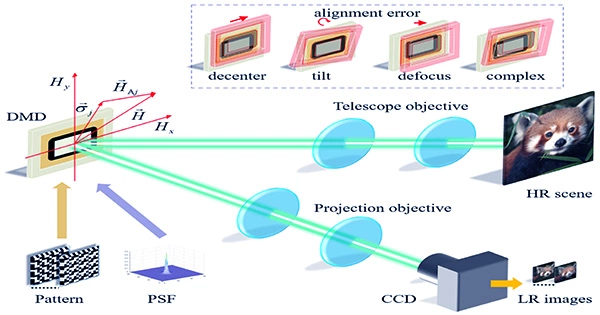Because of its wide field of view and high-resolution capabilities, computational imaging has the potential to transform optical imaging. The simultaneous reconstruction of amplitude and phase, known as “coherent imaging” or “holographic imaging,” increases an optical system’s throughput to billions of optically resolvable spots. This discovery allows scientists to get critical insights into cellular and molecular structures for biomedical research.
Despite their promise, existing large-scale coherent imaging techniques confront barriers to widespread clinical application. To attain a high resolution and signal-to-noise ratio, many of these approaches require numerous scanning or modulation procedures, resulting in extensive data-gathering durations. Due to compromises between speed, resolution, and quality, this slows down imaging and restricts its viability in clinical settings.
Recent image denoising methods, which use denoising algorithms during iterative reconstruction to improve imaging quality with sparse data, provide a viable answer. Traditional methods, on the other hand, are computationally demanding, whilst deep learning-based algorithms have poor generalization and compromise visual details.
A team of researchers from the Beijing Institute of Technology, the California Institute of Technology, and the University of Connecticut presented a complex-domain neural network that dramatically improves large-scale coherent imaging in a study published in Advanced Photonics Nexus. This opens up new avenues for low-sampling, high-quality coherent imaging in a variety of modalities.
The method takes advantage of latent coupling information between amplitude and phase components, resulting in multidimensional representations of complex wavefronts. The framework exhibits excellent generalization and robustness over a wide range of coherent imaging modalities.
A network was built by the researchers utilizing a two-dimensional complex convolution unit and a complex activation function. They also created a multi-source noise model for coherent imaging that takes into account speckle noise, Poisson noise, Gaussian noise, and super-resolution reconstruction noise. The multi-source noise model improves domain adaption from synthetic to real data.
Several coherent imaging modalities, including Kramers-Kronig relations holography, Fourier ptychographic microscopy, and lensless coded ptychography, were used to demonstrate the technique. Extensive calculations and testing demonstrated that the technique preserves high-quality reconstructions and efficiency while lowering exposure time and data volume by an order of magnitude.
The high-quality reconstructions have important implications for further high-level semantic analysis, such as high-accuracy cell segmentation and virtual staining, which could help to stimulate the development of intelligent medical care.
The ability to perform high-resolution imaging with minimal exposure time and data volume holds promise for real-time cell monitoring. Furthermore, by merging artificial intelligence diagnosis, this technology has the potential to reveal the mysteries of complex biological systems while pushing the frontiers of medical diagnostics.
















